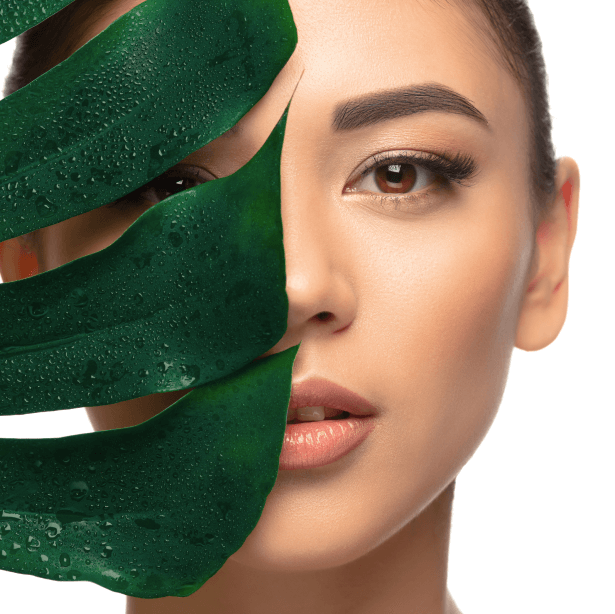From Instagram stories to popular skincare forums, the buzz around microneedling remains unquenchable. For some, the term might evoke images of a futuristic spa treatment; for others, it’s considered nothing short of a skincare revolution. But what is microneedling, why is it talked about so much, and should you give it a try? This ultimate guide will unpack everything you need to know about microneedling, ensuring you’re well-informed before taking the plunge — or the prick, if you will.
What is Microneedling?
Microneedling, also known as collagen induction therapy, is a minimally invasive cosmetic procedure that involves repeatedly puncturing the skin with tiny, sterile needles. The rationale behind the treatment is to promote your skin’s natural ability to repair itself and produce collagen and elastin — two essential components of healthy-looking skin.
Microneedling comes in various forms. The most common method is a dermaroller — a handheld device that resembles a miniature paint roller but with hundreds of tiny needles. There’s also microneedling pens that enable more precise and adjustable needle lengths, offering a tailored approach to skin treatment.
When done properly, microneedling can improve the skin’s texture, reduce the appearance of scars, pores, and stretch marks, and can be combined with other treatments to enhance results.
Microneedling vs. Microdermabrasion: What’s the Difference?
While microneedling and microdermabrasion are often lumped together as cosmetic procedures, there are distinct contrasts. Microdermabrasion is a non-invasive procedure that uses a special applicator to gently remove the outermost layer of the skin to stimulate new skin growth. It is often used to treat light scarring, discoloration, sun damage, and stretch marks, and can improve age spots and blackheads.
On the other hand, microneedling works by causing superficial damage to the dermis, but the more subtle effect is the release of growth factors that promote the production of new collagen and elastin. The punctures also act as micro-channels that allow topical skincare products to penetrate the skin more effectively, enhancing their benefits.
The major difference between the two lies in the depth and nature of the treatment. Microdermabrasion is relatively superficial, while microneedling goes deeper and has a more substantial impact on the skin’s structure and function.
Who Gets Microneedling?
The ideal candidates for microneedling are individuals looking to improve the appearance of fine lines, acne scars, and overall skin texture. It’s a versatile treatment suitable for different skin types and can target various regions, including the face, neck, and décolletage.
Microneedling is particularly appealing to those who prefer a natural approach to skincare, as it leverages the body’s natural healing ability. Patients also include those who want to enhance the effectiveness of their topical skincare products.
Who Shouldn’t Have Microneedling?
Not everyone is a candidate for microneedling. Those with active skin infections or open wounds, a history of keloid scarring, or certain skin conditions such as eczema or psoriasis may not be suitable for the procedure. Additionally, pregnant women, those with a history of blood clotting disorders, or individuals taking certain medications should consult with a dermatologist before getting microneedling.
Procedure Details
What Happens Before Microneedling?
Before your microneedling session, you’ll typically have a consultation with a skincare professional who will assess your skin condition and discuss your goals. They will explain the procedure, potential results, and the number of treatments you might need. You might be asked to avoid sun exposure and cease using specific medications or skincare products that could make your skin more sensitive.
What Happens During Microneedling?
The procedure starts with cleansing the skin and applying a numbing cream. The microneedling device is then passed over the skin, creating tiny wounds. The depth of these wounds depends on the needle size used and your specific skin concerns. You might feel some discomfort, but it’s generally tolerable due to the numbing cream.
The entire session could take up to 30 minutes, depending on the treatment area. Microneedling pens often allow for adjustable needle lengths to target different areas of the face with varying needs for precision.
What Happens After Microneedling?
After microneedling, your skin may be red and feel sensitive, much like a sunburn. There’s also a possibility of mild swelling and bruising. These side effects generally subside within a few days. Proper post-treatment care, such as avoiding strenuous activities, direct sun exposure, and certain skincare products, is crucial for optimal recovery.
Multiple sessions are often recommended to achieve the best results, typically spaced a few weeks apart. Your skincare professional will guide you on the appropriate aftercare and the frequency at which you should receive treatments.
Risks/Benefits
What are the Risks of Microneedling?
The risks of microneedling are low when the procedure is performed by a qualified professional. However, there are potential side effects, like infection, scarring, and changes in skin pigmentation, which are quite rare but can occur.
Another risk factor is the possibility of skin irritations or allergic reactions from the application of topical products immediately following the treatment. This is why it is key to rely on reputable skincare professionals who use high-quality, sterile tools.
What are the Benefits of Microneedling?
The main benefits of microneedling include the reduction of fine lines and wrinkles, improvement in skin texture, and an overall more youthful complexion. It’s effective for treating a variety of skin concerns, from acne scars to enlarged pores. Additionally, microneedling can lead to better product penetration, meaning your skincare regimen could yield even better results.
For those seeking a treatment with minimal downtime and natural results, microneedling could be a game-changer. However, individual experiences may vary, and it’s important to set realistic expectations with your provider.
In conclusion, microneedling is a treatment that demands thoughtful consideration. It’s a process that requires patience, commitment to aftercare, and, above all, choosing the right professional to perform it. If you’re captivated by the stories of skin transformation, consult with a dermatologist or licensed esthetician to see if microneedling could be a fitting addition to your skincare routine. Remember, your skin is as unique as you are, and real beauty lies in the confidence that comes from a healthy glow, inside and out.
FAQ’s
What Can I Expect After Microneedling?
Following a microneedling session, expect your skin to undergo a series of changes as it begins its process of recovery and rejuvenation. Initially, redness and sensitivity similar to a mild sunburn are common, and some individuals may experience slight swelling or bruising. These symptoms are typically short-lived, subsiding within a few days post-treatment. It’s crucial during this period to adhere to a gentle skincare routine, avoiding any harsh products or activities that could irritate your skin further. Additionally, protecting your skin from direct sun exposure by applying a broad-spectrum sunscreen is essential to prevent any pigmentation changes. Over the weeks following your treatment, as your skin heals, you’ll start to notice improvements in texture, firmness, and overall appearance. For optimal results, following the aftercare instructions provided by your skincare professional is paramount.
What exactly does microneedling do?
Microneedling works by creating tiny micro-injuries in the skin, which triggers the body’s natural healing response. As a result, collagen and elastin production are stimulated, leading to improved skin texture and firmness. Additionally, microneedling can increase product absorption and promote better circulation for a youthful glow. Over time, this process can reduce the appearance of fine lines and wrinkles, acne scars, and enlarged pores. It’s a minimally invasive treatment that offers natural-looking results without altering your facial structure. However, it’s important to note that individual experiences may vary and setting realistic expectations with your skincare professional is key for a successful outcome.
Is Microneedling Good for Your Face?
Microneedling has gained popularity as a cosmetic procedure for various good reasons. It is considered beneficial for the face by many skincare professionals and patients who have undergone the treatment. This minimally invasive technique targets concerns such as wrinkles, fine lines, acne scars, and enlarged pores, making it a versatile option for facial rejuvenation. The boost in collagen and elastin production, key components for maintaining youthful skin, is a significant advantage. Furthermore, microneedling improves the efficacy of topical treatments by enhancing absorption rates. While it is deemed safe for most skin types, the outcome can vary among individuals. Thus, consulting with a qualified skincare professional to assess suitability and potential benefits for your specific needs is crucial.
What are the risks of Microneedling?
When considering microneedling, it’s essential to be aware of the potential risks despite its overall safety profile. The most common side effects include temporary redness, swelling, and sensitivity in the treated area, akin to a mild sunburn. Though rare, there is also a risk of infection, particularly if the procedure is performed under non-sterile conditions, or if aftercare instructions are not followed meticulously. Furthermore, improper technique or device settings can lead to scarring and changes in skin pigmentation, with hyperpigmentation being a concern especially for individuals with darker skin tones. Additionally, there’s a slight chance of triggering allergic reactions or irritations due to the topical products applied during or immediately after the treatment. For those with active skin infections, conditions like acne or herpes, or who are pregnant, microneedling may not be advisable. To minimize these risks, it’s crucial to select a qualified and experienced professional for the procedure.

